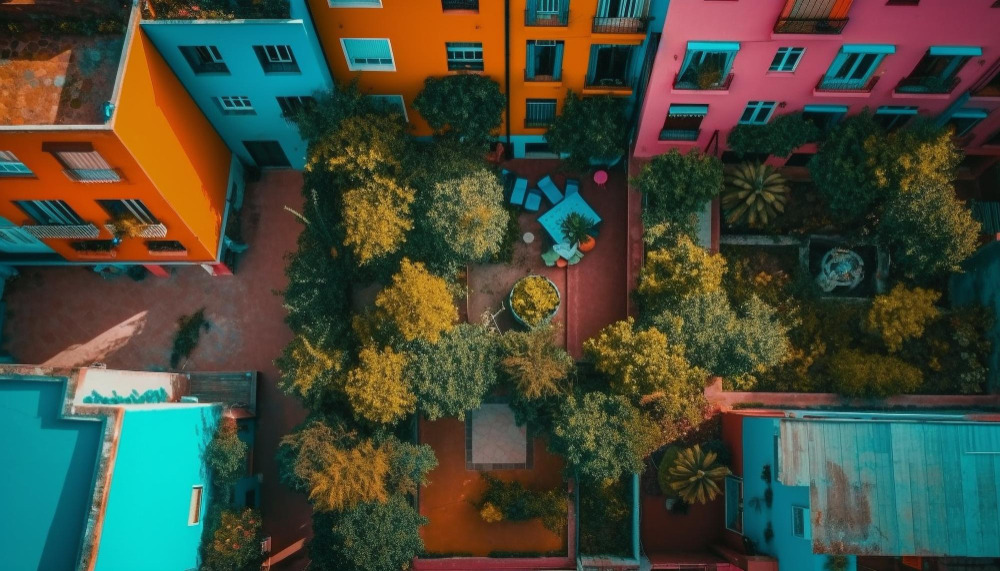Urban Designer’s Guide to Vibrant Spaces
- November 29, 2023
- 3 min

Welcome to a deep dive into the art and science of urban design, where we explore how the skills of an urban designer are pivotal in creating vibrant, living spaces in our cities. In this blog post, we’ll unravel the layers of urban design, highlighting its importance in our daily lives and the transformative power it holds over our urban environments.
The Essence of Urban Design
Urban design is not just about building structures; it’s about creating a fabric that weaves together the social, cultural, and economic threads of urban life. An urban designer operates at the intersection of architecture, planning, and public policy, aiming to harmonize these elements into a cohesive whole. Their role is crucial in developing spaces that are not only functional but also engaging and accessible to everyone.
The Human-Centric Approach
At the heart of urban design lies a focus on human experience. This field isn’t just about aesthetics; it’s about creating spaces that resonate with the people who use them. Urban designers think about how people interact with their surroundings, how they move through spaces, and how these spaces can enhance their quality of life.
Balancing Functionality and Aesthetics
One of the key challenges for an urban designer is finding the right balance between functionality and visual appeal. This involves meticulous planning to ensure that urban spaces serve their practical purposes while also providing an appealing environment for the community. From the layout of streets and parks to the design of public buildings and monuments, every aspect plays a role in shaping the character of a city.
Sustainability and Urban Design
Sustainability is a buzzword in many fields, and urban design is no exception. Urban designers are increasingly focusing on creating spaces that are environmentally friendly and sustainable. This means considering factors like green spaces, energy-efficient building designs, and infrastructure that supports sustainable modes of transportation.
Community Involvement
The involvement of the community is essential in urban design. After all, these are the people who will live, work, and play in these spaces. Urban designers often work closely with community members to understand their needs and preferences. This collaborative approach ensures that the final design is not only functional but also reflective of the community’s identity. For more details visit us at https://www.philmyrick.com/.
The Impact of Technology in Urban Design
Technology has revolutionized the field of urban design. From advanced software for designing and modeling to tools for gathering and analyzing data, technology has made it easier for urban designers to visualize and execute their ideas. It also allows for more precise planning and can help predict the impact of design choices on the environment and society.
Challenges and Rewards
The urban design comes with its set of challenges. From dealing with bureaucratic red tape to addressing the diverse needs of a community, urban designers must navigate a complex array of issues. However, the rewards are significant. Seeing a project come to life and positively impact a community is an immensely satisfying experience.
The Future of Urban Design
Looking ahead, the field of urban design is set to become even more critical. As cities continue to grow and evolve, the need for thoughtful, well-designed urban spaces will only increase. Urban designers will play a crucial role in shaping the future of our urban landscapes, ensuring they are not only functional and sustainable but also vibrant and inviting.
Conclusion
Urban designers have a powerful impact. They transform our urban landscapes in ways that matter to us all. Their vision helps us see beyond the concrete and steel. It allows us to envision cities that are not only efficient but also warm and welcoming. The role of an urban designer is not just a profession; it’s a commitment to enhancing the fabric of our urban life, one space at a time.
Throughout this post, we’ve explored how urban designers play a diverse and vital role. They don’t just design spaces for us to live in. They create environments that uplift our lives, reflect our collective values, and aim for a future that is kinder to our planet. As our cities keep changing, the knowledge and creativity of urban designers remain essential. They ensure that our urban areas are more than just functional. They turn them into vibrant, flourishing communities.
Read More:
Dynamic Urban Spaces
About Phil Myrick
Phil Myrick is an advisor to planning and development projects around the world and former CEO of Project for Public Spaces. Phil applies research into how people interact with their environments and each other to create vibrant places, destinations, districts, and developments. His strategic advice has helped his clients achieve their goals of attracting people, engaging people in their community, strengthening connections and social fabric, and stimulating economic development. Phil is married with two teenagers and struggles to satisfy his passion for being outdoors or on the water. https://philmyrick.com

